Pu'u Huluhulu |
Partly because its start time fit with our schedule, we decided to take this hike as our main activity the first afternoon we spent in Hawai'i Volcanoes National Park. It was a good choice! We got to see some great scenery, had our first experience walking on solidified lava, and learned a great deal about the plant life, volcanoes, general geology, and history/culture of the Big Island. We have our excellent volunteer ranger guide, James, to thank for all we learned. Here he is at one of the trail markers, taking a water break; at the right is the road that used to lead to Napau Crater, before the flow of lava you see as a black cliff cut it off (you can still hike to this crater, but you have to sign in to do it—the eruption situation is such they might need to alert you to leave quickly!):
 |
 |
Pu'u means "hill" in Hawaiian, and Huluhulu means "shaggy." The hill has a shaggy appearance because it's old enough for there to be a good bit of vegetation on it, unlike much of the land you traverse to get to it.
The first part of the trail led through a kind of meadow/scrub vegetation ecosystem, but just off to the right we could see the lava flows left by fairly recent eruptions of Mauna Ulu, a nearby mountain.
 |
 |
 |
 |
Gradually the trail led closer to the lava fields, with all kinds of interesting formations for us to see, like the "lava trees," made when the slow-moving lava encircles a tree and burns it up, leaving a hollow tube-like structure when the lava cools. At left is a view of one of these "trees" next to a regular tree, and at the right is a view inside the tube.
 |
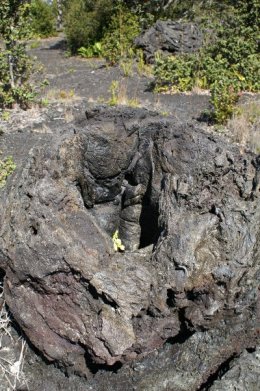 |
 |
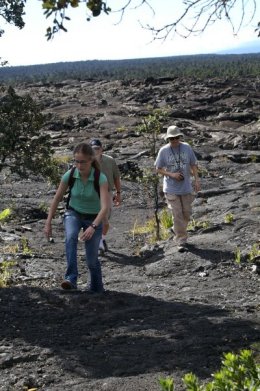 |
Even though the lava fields you hike over just before climbing the hill seem pretty barren, there's still some life there, as you can see by the shot Henry got of this interesting bug, on the right (not to mention the occasional tourist, on the left, with Mauna Loa in the far background):
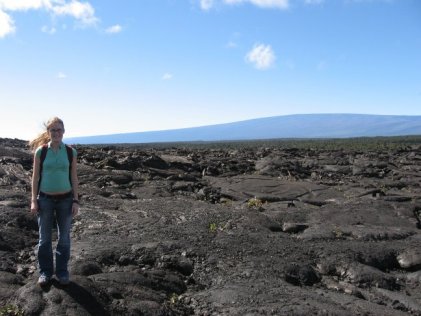 |
 |
The big attraction of Pu'u Huluhulu is the scenery that, if you are lucky with the weather, is visible from the top. As you can see by these pictures, we were very lucky! James told us sometimes you can't even see Mauna Ulu from the top of Pu'u Huluhulu due to clouds or fog, but we could see it just fine where these photos were taken, along the trail even before we got to the hilltop:
 |
 |
The best test of the good seeing was that we could see the steam coming from the Pu'u O'o vent, Kilauea's currently active one, 7 or 8 miles away.
 |
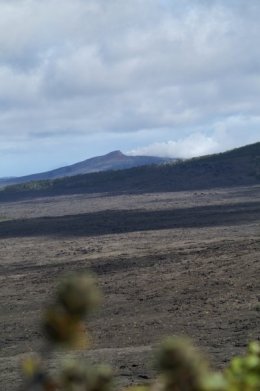 |
But the view looking the other way was equally impressive, as we got a great look at the long mountain, Mauna Loa (on the left) and the white mountain, Mauna Kea (with its telescopes, on the right):
 |
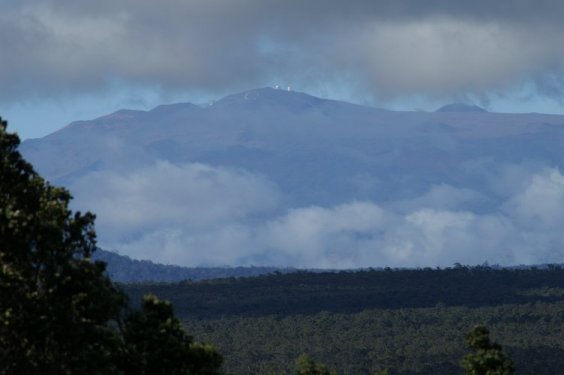 |
After our hike we made a couple of stops along Chain of Craters Road. One was at this crater, Pauahi, made memorable by the "Abe Lincoln" shadow we chanced to notice. The other was Lua Manu, whose name caught our attention. (Named for Spurs' guard Manu Ginobili? Probably not; "manu" means "bird" in Hawaiian and "lua" means "vent" or "crater.")
 |
 |
 |
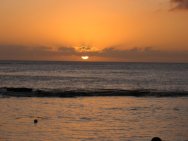 |
 |